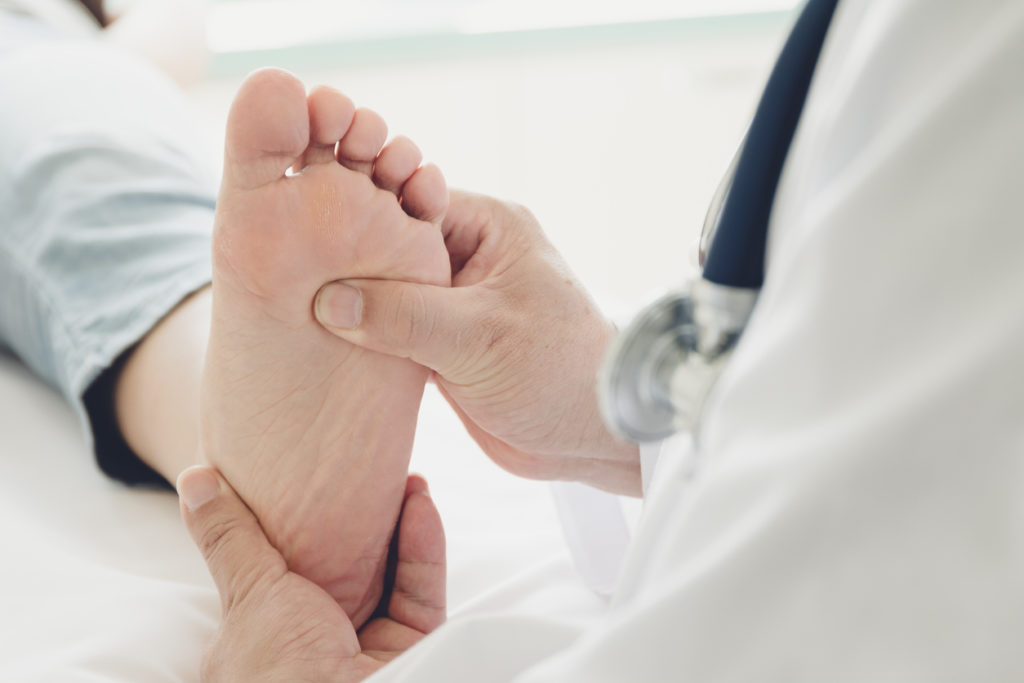Rationale:
Drugs used in chemotherapy work in different ways to stop cancer cells from dividing so they stop growing or die. Radiation therapy uses high-energy x-rays to damage cancer cells. Giving combination chemotherapy together with radiation therapy may kill more cancer cells.
Purpose:
This clinical trial is studying how well giving chemotherapy together with radiation therapy works in treating patients with acute lymphoblastic leukemia that has relapsed in the CNS and/or testes.
Official Title
Pilot Study of Intensified Systemic Chemotherapy and Reduced-Dose Radiotherapy in Patients With Acute Lymphoblastic Leukemia and Late Isolated CNS or Testicular Relapse
Conditions
Study Type
Interventional
Study Design
This is a pilot, multicenter study. All patients receive common induction, consolidation, re-induction, and intensification chemotherapy. Patients are stratified to maintenance therapy according to site of extramedullary relapse (CNS vs testicular). Objectives:Primary- Determine the efficacy of intensified systemic chemotherapy with reduced-dose CNS radiotherapy in patients with acute lymphoblastic leukemia and late isolated CNS relapse. – Determine the efficacy of intensive systemic chemotherapy without testicular radiotherapy in patients with acute lymphoblastic leukemia and late isolated testicular relapse. – Determine the toxicity of these regimens in these patients. Secondary- Determine whether bone marrow involvement is present at the time of extramedullary relapse in patients treated with these regimens. – Correlate pretreatment minimal residual disease with outcomes in patients treated with these regimens. – Correlate the role of host gene polymorphisms with toxicity of these regimens and incidence and outcome in these patients. – Determine the neuropsychological sequalae associated with isolated CNS relapse and these treatment regimens in these patients. Patients receive vincristine IV on days 1, 8, 15, and 22; oral dexamethasone twice daily on days 1-28; daunorubicin* IV over 15 minutes on days 1, 8, and 15; and intrathecal triple therapy** (ITT) comprising methotrexate, hydrocortisone, and cytarabine on days 1, 8, 15, and 22. NOTE: *The total dose of anthracyclines on this study is capped at 450 mg/m2. Once this dose is reached, all subsequent doses of daunorubicin are omitted. NOTE: **Patients with isolated testicular relapse receive ITT on day 1 only.In addition to the above, patients with isolated testicular relapse also receive high-dose methotrexate IV continuously over 24 hours on day -14. Patients with clinical signs of disease at the end of induction undergo testicular biopsy. Patients with CNS disease who do not achieve CNS remission after induction therapy receive additional ITT as above on days 29 and 36. Patients receive high-dose cytarabine IV over 3 hours twice daily on days 1-2 and 22-23 and pegaspargase intramuscularly (IM) on days 2 and 23. Patients also receive filgrastim (G-CSF) subcutaneously (SC) beginning on days 3 and 24 and continuing until blood counts recover. Patients with isolated testicular relapse with positive biopsy results at the end of induction undergo testicular radiotherapy once daily for a total of 12 fractions during consolidation therapy. Patients receive high-dose methotrexate with leucovorin calcium rescue IV over 24 hours on days 1, 22, 43, and 64 and oral mercaptopurine once daily on days 2-6, 23-27, 44-48, and 65-69. Patients also receive etoposide IV over 1 hour and cyclophosphomide IV over 15-30 minutes on days 8, 29, 50, and 71. Patients receive ITT* on days 15, 36, 57, and 78. NOTE: *Patients with isolated testicular relapse receive ITT on days 36 and 78 only.Reinduction therapy (weeks 23-26): Patients receive vincristine IV on days 1, 8, 15, and 22; oral dexamethasone twice daily on days 1-28 (for patients < 13 years of age) OR twice daily on days 1-7 and 15-21 (for patients ⥠13 years of age); and daunorubicin IV over 15 minutes on days 1, 8, and 15. Patients receive high-dose cytarabine IV over 3 hours twice daily on days 1-2, 43-44, 85-86, and 127-128; pegaspargase IM on days 2, 44, 86, and 128; ITT* on days 22, 64, 106, and 148; high-dose methotrexate IV continuously over 24 hours on days 29, 71, 113, and 155; oral mercaptopurine on days 30-34, 72-76, 114-118, and 156-160; and etoposide IV over 1 hour and cyclophosphamide IV over 15-30 minutes on days 36, 78, 120, and 162. Patients also receive G-CSF SC beginning on days 3, 45, 87, and 129 and continuing until blood counts recover. NOTE: *Patients with isolated testicular relapse receive ITT on days 22 and 106 only.Patients receive dexamethasone orally or IV twice daily on days 1-21 (for patients < 13 years of age) OR on days 1-7 and 15-21 (for patients ⥠13 years of age). Patients also receive vincristine IV on days 1, 8, and 15 and pegaspargase IM on days 1 and 15. Patients with isolated CNS relapse also undergo cranial radiotherapy once daily, 5 days a week, for a total of 8 fractions.Maintenance therapy for isolated CNS relapse: (weeks 55-104): Patients receive dexamethasone orally or IV twice daily on days 1-5; oral mercaptopurine once daily on days 1-42; methotrexate IM on days 1, 8, 15, 22, 29, and 36; and vincristine IV and cyclophosphomide IV over 1 hour on days 43, 50, 57, and 64. Treatment repeats every 10 weeks for 5 courses. (Weeks 55-74): Patients receive ITT on day 1 and dexamethasone, mercaptopurine, methotrexate, vincristine, and cyclophosphomide as in maintenance therapy for isolated CNS relapse. Treatment repeats every 10 weeks for 2 courses. (Weeks 75-106): Patients receive vincristine IV on day 1; dexamethasone orally or IV on days 1-5; oral mercaptopurine on days 1-28; and methotrexate IM on days 1, 8, 15, and 22. Treatment repeats every 28 days for 8 courses. Patients also receive ITT on day 1 every 12 weeks for 3 doses. Patients with combined testicular and CNS relapse receive high-dose methotrexate IV continuously over 24 hours on day -14 in addition to the same chemotherapy and radiotherapy administered during the induction, consolidation, intensification I, reinduction, intensification II, and maintenance phases of therapy as isolated CNS relapse patients. All patients undergo neuropsychological assessment within 3 months after completion of induction therapy (before cranial radiotherapy) and at 2 years after completion of treatment. Patients are followed for survival.PROJECTED ACCRUAL: A total of 257 patients (143 with isolated CNS relapse and 114 with isolated testicular relapse) will be accrued for this study within 5.7 years.
Further Details
Study Start
Eligibility & Criteria
Ages Eligible for Study: 1 Year – 29 YearsGenders Eligible for Study: Both CriteriaDisease characteristics:- Diagnosis of acute lymphoblastic leukemia – T- or B-precursor lineage – In first bone marrow remission (M1 by morphology) AND duration of first complete remission ⥠18 months from time of initial diagnosis – First isolated CNS and/or testicular relapse – Isolated CNS relapse, as defined by 1 of the following: WBC ≥ 5/mm3 in cerebrospinal fluid (CSF) with blasts present on cytospin Any number of WBC in CSF with immunophenotypic proof of leukemic relapse, defined by the following: Identifiable blasts AND 1 of the following: B-lineage (TdT OR CD-10-positive on 2 consecutive CSF samples obtained 4 weeks apart) T-lineage (TdT AND CD-7 OR TdT positivity alone on 2 consecutive CSF samples obtained 4 weeks apart) Isolated testicular relapse, defined as biopsy proven testicular involvement No Down syndrome No known optic nerve and/or retinal involvement Patient Characteristics:- Age- 18 months to 29 years at relapse – Performance status- Karnofsky 30-100% (for patients > 16 years of age) OR Lansky 30-100% (for patients ≤ 16 years of age) – Life expectancy- Not specified – Hematopoietic- Not specified – Hepatic- Not specified – Renal- Creatinine clearance or radioisotope glomerular filtration rate ≥ 70 mL/min OR – Creatinine, based on age as follows: ≤ 0.8 mg/dL for patients ≤ 5 years of age ≤ 1.0 mg/dL for patients 6 to10 years of age ≤ 1.2 mg/dL for patients 11 to15 years of age ≤ 1.5 mg/dL for patients ≥ 16 years of age CardiovascularShortening fraction ⥠27% by echocardiogram OR Ejection fraction ⥠50% by MUGA OtherNot pregnant or nursing PRIOR CONCURRENT THERAPY:Biologic therapyNo prior bone marrow transplantation ChemotherapyPrior total anthracycline dosage ⤠360 mg/m^2 Endocrine therapyNot specified RadiotherapyNot specified SurgeryNot specified
Total Enrolment
257
Contact Details
Australia, QueenslandOffice of S. David Lang, Herston, Brisbane, Queensland, 4029, Australia; Recruiting Helen Irving 617-3636-8671 Australia, Western AustraliaPrincess Margaret Hospital for Children, Perth, Western Australia, 6001, Australia; Recruiting David Baker 011-6189340-8234
All content and media on the HealthEngine Blog is created and published online for informational purposes only. It is not intended to be a substitute for professional medical advice and should not be relied on as health or personal advice. Always seek the guidance of your doctor or other qualified health professional with any questions you may have regarding your health or a medical condition. Never disregard the advice of a medical professional, or delay in seeking it because of something you have read on this Website. If you think you may have a medical emergency, call your doctor, go to the nearest hospital emergency department, or call the emergency services immediately.







